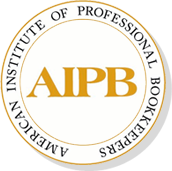302 pages [194 self-teaching + 108 self-quizzes with detailed answers]
Section 1: FIT withholding: The wage bracket and percentage methods. How to use IRS tables and special withholding rates.
Section 2: Fringe benefits. How to tax working condition fringe benefits . . . health insurance . . . qualified employee discounts . . . transit passes and parking . . . gift certificates, and more.
Section 3: Fringe benefits. How to tax—or not tax—various fringe benefits and report each one on the W-2, 941 and 940.
Section 4: Expense reimbursements, advances and allowances. What’s taxable v. nontaxable. Required substantiation. The cents-per-mile, standard mileage and federal per diem reimbursement methods. W-2 reporting.
Section 5: Personal use of company cars. 3 safe-harbor methods for valuing personal use and 4 requirements for using them. Reporting the value on the employee’s W-2.
Section 6: Deferred compensation and “cafeteria” plans. How to withhold pretax and report contributions to 401(k) plans and SEPs on the 941 and W-2. Contribution limits.
Section 7: Disability v. third-party sick pay. Handling sick pay from the employer v. self-insured plan v. insurer. FUTA and FIT taxability. Reporting sick payments on the W-2, 941 and 940.
Section 8: Taxing and reporting life insurance benefits. Reporting group-term life on the 940, 941 and W-2.
Section 9: Imputed income and gross-up for cash payments. How to compute a bonus that includes the employee’s share of taxes or withhold taxes after a cash bonus has been given.
Section 10: Imputed income and gross-up for fringe benefits. How to compute the employee’s share of taxes on noncash fringe benefits.
Section 11: Voluntary v. involuntary deductions. Child support orders, federal/state levies, other notices. Deductions permitted from employee pay before levy. Limits on the levy.
Section 12: Basics of workers’ comp insurance. Variations by state. Classification codes, computing premiums, taxation of workers’ comp benefits.
Glossary of key terms.
Appendix of sample payroll forms with instructions: W-4, 940, 940-Sched. A, 941, 941-Sched. B, 944, 945, 945-A, W-2, W-3, W-2c, W-3c, 941-X, I-9, 1099-MISC.
Publisher: AIPB


ANN –
MOST PAYROLL IS DONE ON COMPUTERS AND OLD DATA
Upvote if this was helpful (0) Downvote if this was not helpful (0) Flag for removal
KAREN –
I learned there is much more to doing a payroll than the simple payrolls we process at the company I work for.
Upvote if this was helpful (0) Downvote if this was not helpful (0) Flag for removal
PING –
It’s very useful.
Upvote if this was helpful (0) Downvote if this was not helpful (0) Flag for removal